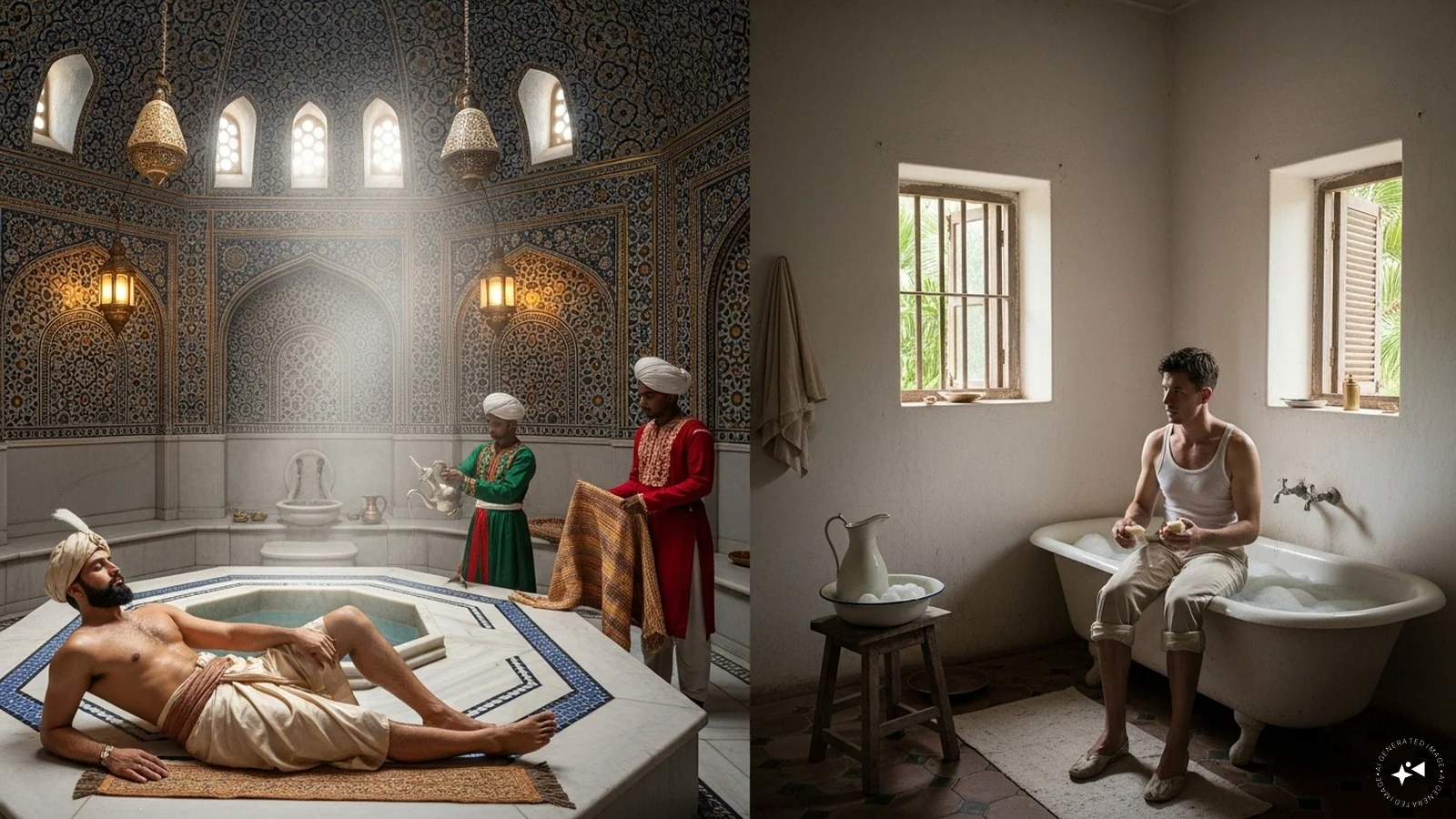By News18,Parishmita Saikia
Copyright news18

Bathing isn’t just limited to hygiene; it can be a window into culture, climate, and civilisation. The story of how foreign powers adapted their bathing habits in India reveals a fascinating blend of ritual, comfort, and survival.
When the Mughals swept in from Central Asia and the British arrived from the cold, damp isles of Europe, both encountered a land vastly different from their homelands, not just in terms of heat and dust, but also in how people kept clean. River baths, scented oils, hot tubs, and sacred water all played a part in this unusual history of bathing across empires.
Let’s explore how two very different rulers, the Mughals and the British, washed away the grime of conquest, and in doing so, absorbed the customs of India, one bath at a time. Historical records and travellers’ accounts offer fascinating insights into how both groups adapted their hygiene routines to the Indian climate and culture.
Mughal Bathing Traditions
The Mughals ruled India from the 16th to the 19th centuries, and their bathing habits reflected a mixture of Islamic practices, Persian sophistication, and adaptations to India’s tropical heat. Upon their arrival, Mughals found the Indian tradition of public bathing in rivers, ponds, and wells somewhat unfamiliar. In response, they constructed hammams, luxurious bathhouses, inspired by Persian and Turkish models.
These hammams, often located within royal palaces, gardens, and serais (inns), featured separate chambers for cold, warm, and steam baths. Aromatic oils, herbs, and flower petals were added to bathwater to enhance the experience.
The use of soap was rare; instead, a natural body scrub made from gram flour, turmeric, sandalwood, or ingredients like shikakai and soapnut was preferred.
Babur, the Mughal dynasty’s founder, valued cold baths, seeing them as a remedy for the heat, dust, and dry winds of the Indian plains. Cleanliness held great religious and cultural importance. Bathing before Fajr (the early morning Islamic prayer) was common. Wealthy individuals often bathed twice daily, once in the morning and again in the afternoon, particularly during the sweltering summer months.
The Mughal tradition of hammam bathing is still reflected today in places like Bhopal’s Hammam-e-Qadimi, which maintains age-old rituals of massage and oil baths.
The Sacred Water Of The Ganges
As time went on, some Mughals embraced Indian bathing customs. Bathing in the Ganges River was seen as spiritually significant by Hindus, and this belief appeared to influence several emperors. The Jahangirnama (Tuzuk-i-Jahangiri), Emperor Jahangir’s autobiography, notes his admiration for the purity of Ganga water. He arranged for it to be brought in silver and copper vessels to Lahore, Agra, and even as far as Kabul, for both bathing and drinking.
His successor, Shah Jahan, also believed in the “purifying and emollient” qualities of Ganges water. According to French traveller François Bernier, this water was specially transported to Delhi and Agra for royal use. Aurangzeb continued this tradition, even deploying dedicated water carriers with his army.
British Bathing Customs In Colonial India
The British presence in India began in the 17th century with the East India Company and culminated in full colonial control. The British brought their own bathing customs, rooted in European domestic life, but were soon forced to adapt to the challenges posed by India’s tropical climate.
British aristocrats and colonial officials favoured bathtub bathing. Servants would fill tubs with hot water, often infused with soaps and aromatic oils. These practices echoed those of Britain, where such luxuries were reserved for the elite. Toiletries were frequently imported from Britain and installed in colonial bungalows.
However, common soldiers and the working class had to make do with rivers, lakes, or wells, despite initial reluctance, as local water sources were seen as “unclean”.
Over time, practicality won out, and even many officers began to embrace local habits, particularly in the intense summer heat.
Soap And The Advent Of Modern Hygiene
The British are credited with introducing modern bathing soap to India. Brands like Lifebuoy and Pears began to appear in the 19th century, becoming widely available over time. For travel or military expeditions, British officers used portable tubs or camp baths, which allowed for basic washing by pouring water over the body.
Morning bathing was the norm, in line with European customs. However, due to India’s heat and dust, afternoon baths became common, particularly among the colonial elite. Evening baths were generally avoided.
Sunday morning baths, in preparation for church, were a key feature of Christian traditions and widely practised.
The Legacy Of The British In Urban Sanitation
As British rule became more entrenched, they introduced modern bathrooms and sanitation infrastructure in major cities like Kolkata, Bombay, and Delhi. These developments, plumbed water supplies, water closets, and sewer lines, were initially meant for British officials and the Indian elite. It would be decades before such facilities became accessible to the wider population.
Modern bathrooms were also installed in railway stations, post offices, and government buildings, helping lay the groundwork for public hygiene in urban India.



